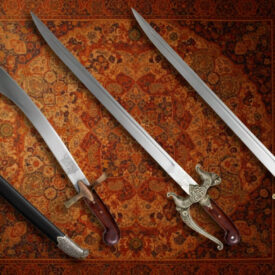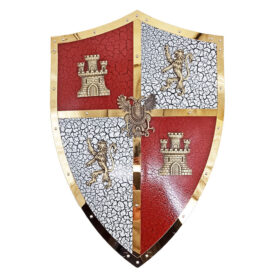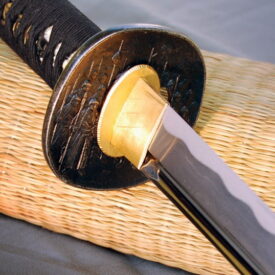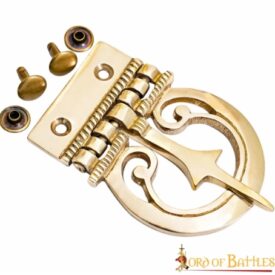Have you ever wondered how gold and silver can merge with steel to create works of art that shine with a millenary history? The answer lies in Toledo, Spain, birthplace of an artisanal technique that is much more than a simple adornment: the Damascening of Toledo. Get ready to immerse yourself in a journey through the tradition, mastery, and dazzling beauty of this unique art.
What is Damascening? A Brilliant Definition
Damascening is a decorative metal technique consisting of the inlay of gold and silver threads or sheets (or other ductile metals) into grooves or cells created on the surface of a metal object, usually steel, iron, or copper. What makes these pieces so striking is the vibrant contrast between the shine of precious metals and the background, which is generally black. It is, in essence, «Toledo gold».
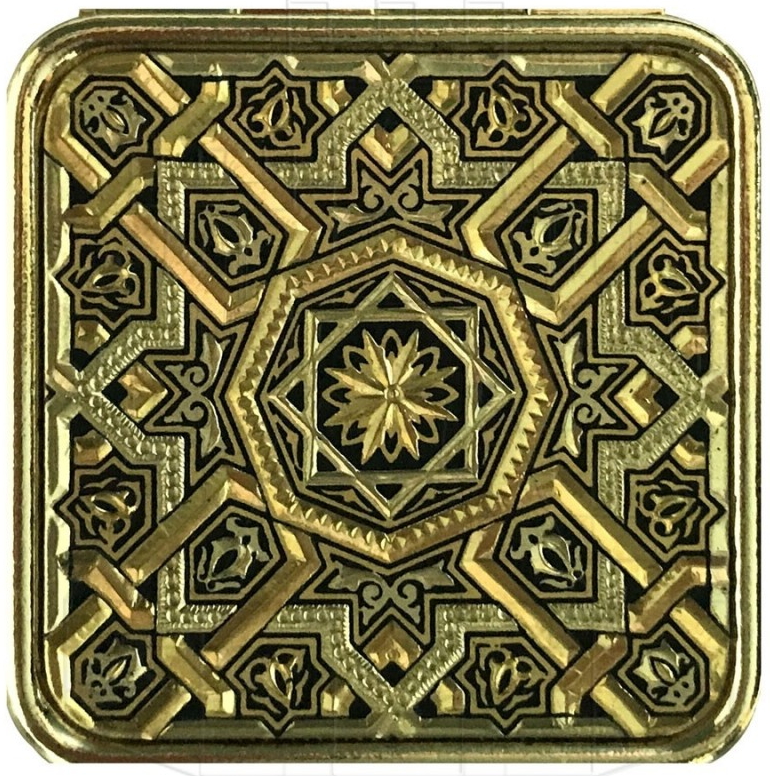
An Echo of the Past: Origin and History of an Ancestral Art
Damascening is not a novelty, but a millenary art with origins tracing back to ancient civilizations of the Middle East, including Persian and Syrian artisans. Its name, «Damascening», comes from the city of Damascus in Syria, traditionally considered its place of origin and export.
There are vestiges of this technique over 1,500 years old in Egyptian and Mycenaean art, also cultivated by the Greeks and Romans. Possibly it is the Egyptians who offer us the furthest antecedent. In the Iberian Peninsula, it was already practiced in pre-Roman times, with examples found in a baldric and a scepter discovered at the Pintia site, and Iberian according to the hilt of the falcata from Almedinilla, Córdoba. It was also used in China and Japan, where it was employed to decorate swords such as katanas.
In Byzantium, this art acquired singular characteristics, and its appearance in Spain was consolidated with the Arab influence after the invasion in the year 711. This technique complemented Toledo’s already rich tradition in the steel and sword industry. During the Renaissance, Toledan damascening masters achieved international fame, and their works were highly valued in European courts. In the 19th century, with the contribution of the Royal Arms Factory of Toledo, the tradition re-emerged and was boosted, although it has maintained its artisanal essence.
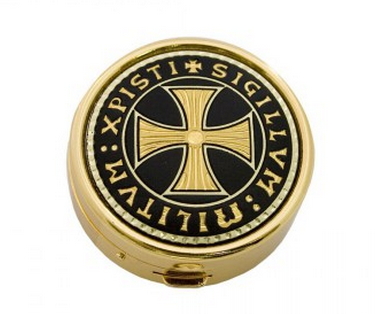
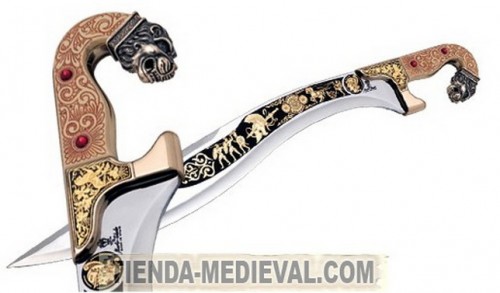
The Magic in Every Detail: The Artisanal Process of Damascening
Damascening is a meticulous and artisanal process that demands great skill, precision, and patience. No glues or adhesives are used; the decoration is held solely by the surface of the metal into which it is inserted. Imagine the necessary dexterity!
Here are the key steps:
- Base Preparation: The process begins with a metal base (generally steel or soft iron) which is chemically prepared, often with nitric acid, to create a porous or rough surface.
- Design and Engraving: Designs are precisely traced onto the metal. Then, with cutting tools such as gouges, blades, burins, or chisels, delicate grooves or cells are engraved into the surface, reproducing the lines of the desired design.
- Precious Metal Inlay: Fine strands or sheets of 24 or 22 carat gold and pure silver are placed and gently hammered into the grooves. This hammering ensures that the precious metal is firmly fixed within the porosity of the iron, becoming «a single body». Silver is harder to work with than gold.
- Bluing: To achieve the characteristic dark background, the piece is immersed in a solution of caustic soda and potassium nitrate at high temperatures (around 800ºC). This heat treatment, called «bluing» (a controlled oxidation), not only darkens the iron but also cleans impurities and enhances the brilliance of the gold and silver.
- Reworking or Burnishing: Once cool, the piece is polished and subjected to a «reworking» or «burnishing» with a chisel to enhance the splendor and brilliance of the golden or silver designs. It is at this point that the work «comes to life» and the damascener imparts their identity.
- Mounting: Finally, if necessary, the damascened piece is set on its mount, transforming into jewelry, decorative objects, etc.
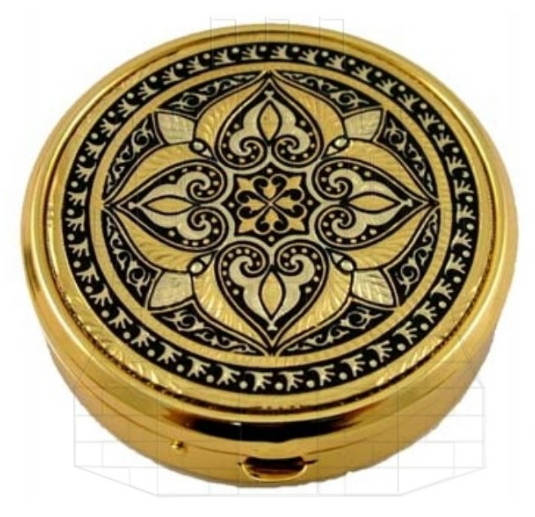
Diversity of Designs and Techniques
The Damascening of Toledo exhibits a surprising variety of styles and techniques:
- Thread Damascening: The oldest and most artisanal method, where fine gold or silver threads are inlaid into lines engraved with a burin. It requires great skill due to its level of detail.
- Sheet Damascening: Allows gold or silver sheets to be inlaid into larger designs, being faster and suitable for larger patterns.
- Arab Style: Geometric designs predominate, being the most genuine and characteristic, with the gold or silver thread highlighted by burins.
- Renaissance Style: Incorporates nature, floral, and animal motifs, popular in the 15th and 16th centuries.
- «Views» Model: Represents urban landscapes of Toledo or customary scenes, often centered on Quixote motifs, so deeply rooted in the region.
In addition to these main styles, Toledan damascenes are differentiated by their specific finishes and motifs, which include:
- Designs referring to the Coat of Arms of Toledo.
- Scenes from Don Quixote de la Mancha.
- Bullfighting scenes.
- Typically Andalusian dance scenes.
- Designs of Virgins.
- Designs with the Giralda of Seville.
- Designs referring to Christ.
- Chalice (only on crosses).
- Designs with the Cathedral of Toledo.
- Hebrew designs, such as the Star of David.
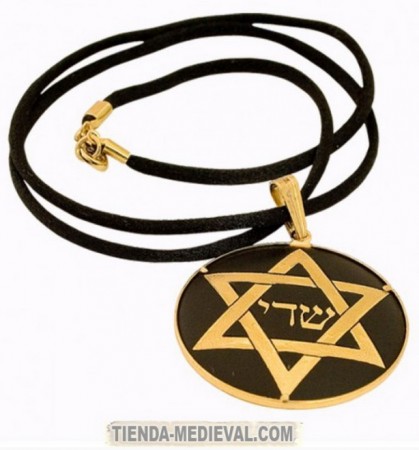
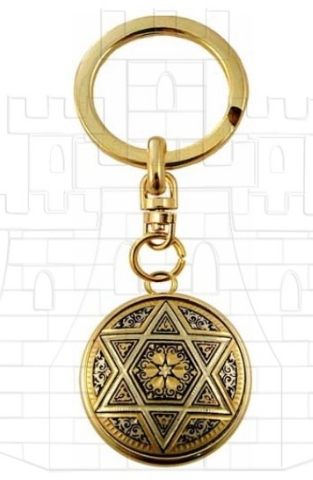

Toledo: The Heart of World Damascening
Toledo is not just a place where Damascening is practiced; it is its main reference and largest producer worldwide. What makes Toledo Damascening unique is:
- Meticulous Artisanal Process: Each piece is handcrafted, preserving a centuries-old tradition.
- Intricate Designs: Inspired by the rich blend of cultures that have passed through the city.
- Long Tradition: Preserved by generations of master artisans.
- Cultural Legacy: Each work is not just a piece of art, but a «piece of history» and a «cultural legacy» that represents the essence of Toledo.
Toledo, welcoming the aesthetic and cultural contributions of so many peoples, open by the condition of its inhabitants to artisanal work, has made damascening a tradition preserved until our time by the vocation of authentic masters. In fact, this craftsmanship serves as an identifying mark of the city, also known as «Toledo Gold».
Over the last few decades, production has shifted from being mostly artisanal to industrializing, given the level of production being carried out and commercialized. However, the quality of hand damascening is far superior to that elaborated industrially, as in the latter, the process is similar to stamping the drawing onto the steel, while in the manual process, the precious materials are inlaid into the iron or steel by hammer blows following the sketch previously drawn on the piece. Fortunately, many shops still offer artisan products, hand-damascened with the tradition of yesteryear. It is estimated that only about 20 damasceners remain who preserve the tradition of making pieces completely by hand in Toledo.
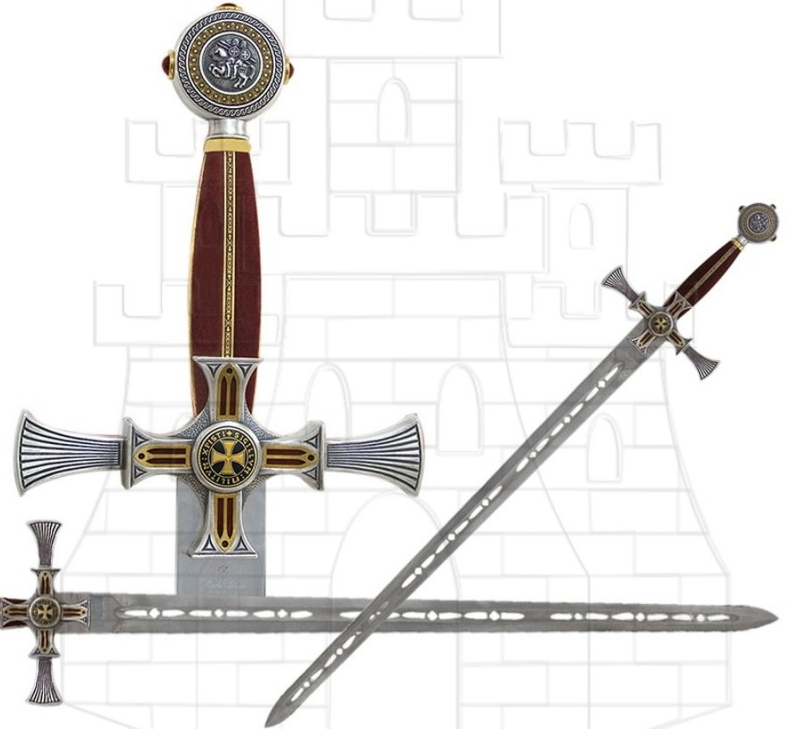

Diversity of Products: A Damascened Item for Every Taste
The versatility of Damascening allows it to be applied to an astonishing variety of objects, turning them into true functional or decorative works of art:
- Jewelry: Rings (Masonic, medieval, Steampunk, Templar, Viking), brooches and fibulae, pendants (Arab, Celtic, Egyptian, Greek, medieval, Viking, etc.), cufflinks, earrings, bracelets and torques.
- Desk Items: Letter openers (including miniature Renaissance swords).
- Decorative Objects: Pillboxes (round, square, with partitions, with bird designs), bells, hourglasses, paintings (like Don Quixote or views of Toledo), keychains (Star of David), chess sets.
- Miniatures: Renaissance daggers and sets of mini-damascened swords with the inscription of Toledo. Beautiful swords in Toledan damascened steel and with their own craftsmanship are even made.
- Other uses: It has even extended to luxury watch dials, such as those in Blancpain’s «Damasquinage» collection, with complex designs and even three-dimensional elements.
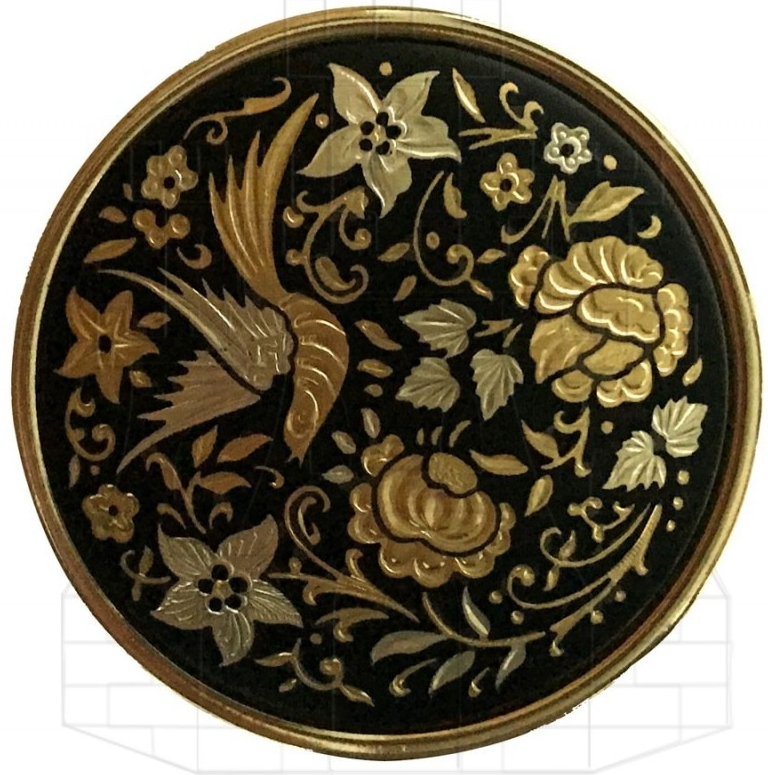
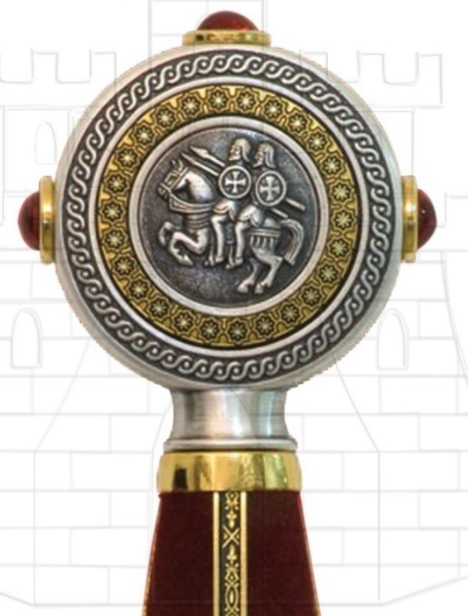
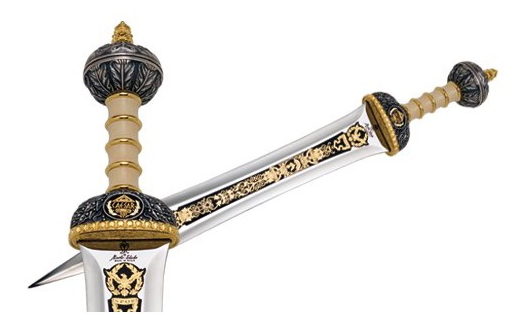
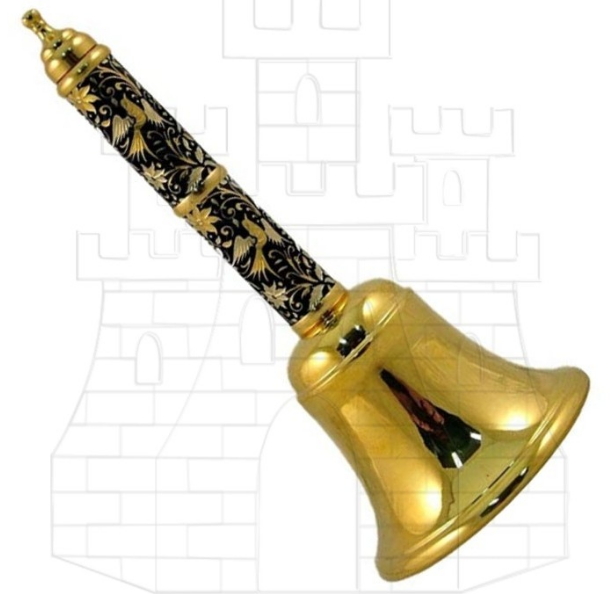
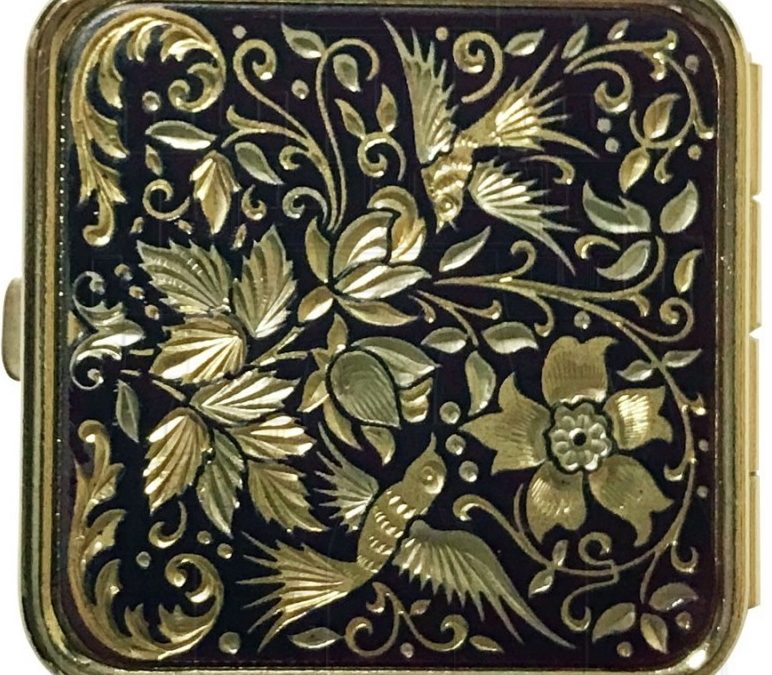
Damascening and Sustainability: An Art Looking to the Future
Sustainability is increasingly relevant in the world of craftsmanship. Toledan artisans are adopting practices that not only preserve tradition but also promote the use of responsible materials, such as recycled metals, and processes that minimize environmental impact. This resonates with consumers who seek beautiful pieces with a positive impact, ensuring the future relevance of this art without losing its roots.
Why Choose a Damascened Product? The Perfect Gift
A damascened item is much more than a simple object; it is an exceptional gift that combines elegance with deep cultural symbolism. By gifting a piece of Damascening, you are giving a «piece of history and tradition» carefully created by the artisan hands of Toledo.
Its uniqueness and intrinsic beauty make each piece memorable and treasured over time. It is an ideal present for special occasions, ensuring that the recipient always remembers the meaning and history behind this art.
Connecting with Tradition: Learning Damascening in Toledo
If the beauty of this art has captivated you, you’ll be glad to know that in Toledo, it is possible to find workshops and classes that teach the art of Damascening. Participating in them is an enriching way to connect firsthand with the local culture and experience the creative process of these wonders.
Immerse yourself in the rich history and exquisite craftsmanship of Toledo. Discover a piece that is not just an object, but a living testament to mastery and tradition.
Don’t miss the best selection of damascened pieces. See all damascened products

